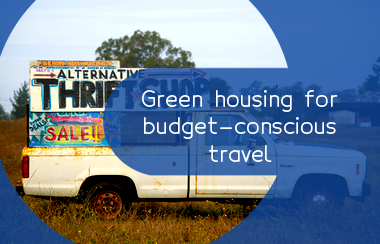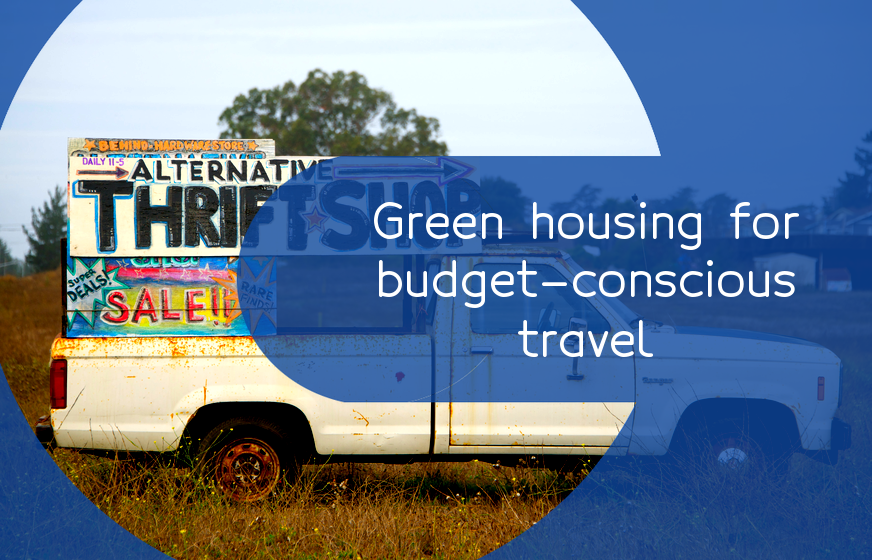Housing alternatives and green housing ideas have gained significant popularity in recent years due to the rising cost of living and concerns about environmental sustainability. These ideas include:
- 1. Tiny houses: These are small homes with a minimalistic approach to design and functionality. The tiny house movement aims to provide affordable housing solutions with a low environmental impact.
- 2. Co-housing: This involves a group of people living together in a shared space, often with communal areas, meals, and activities. Co-housing is a cost-effective option for those looking for community living and reduced housing expenses.
- 3. House sharing: This involves splitting the costs of a larger house between multiple tenants. This is a good option for those who want to save money on rent and utilities.
- 4. Eco-friendly homes: These are houses built with sustainable building materials and designed to use renewable energy sources. Some eco-friendly homes use solar panels, wind turbines, and other clean energy technologies.
- 5. Container homes: These are homes built using steel shipping containers. This is a cheap and eco-friendly option for those looking for low-cost housing alternatives.
Overall, housing alternatives and green housing ideas are sustainable and cost-effective options for those looking to save money and reduce their carbon footprint. By adopting these ideas, people can reduce their dependency on traditional housing options, save money, and live more sustainable lifestyles.
18 alternative housing options
Alternative housing options refer to different types of homes that diverge from traditional or standard brick and mortar houses. These options can vary widely and include:
- 1Tiny houses: Typically between 100-400 square feet, these homes are small but efficient. They often have multi-functional furniture and are designed to maximize every inch of space.
- 2Co-housing: These are communal living arrangements where residents share common areas such as kitchens and living rooms but have private bedrooms and bathrooms.
- 3Shipping container homes: Converted shipping containers are used as building blocks to create unique and affordable homes. Theyre sustainable and often customizable.
- 4Treehouses: These are houses built on trees and can range from simple platforms to complex multi-story homes, providing an idyllic and unique living experience.
- 5Yurts: Yurts are traditionally round tents used by nomads. Modern-day yurts are often made of sturdy materials such as wood and can be used as a permanent home.
- 6Van and RV living: Living in a van or recreational vehicle can offer mobility, cost savings, and freedom.
- 7Earth-sheltered homes: These homes are built partially or entirely underground, providing natural insulation and energy efficiency.
Overall, alternative housing options offer unique benefits that may be suited to particular lifestyle choices, environmental concerns, and financial constraints.
House hack with an ADU
Housing hacking with an ADU (Accessory Dwelling Unit) involves purchasing or building a property with a separate living space, such as an apartment or a granny flat. Here's a step-by-step guide on how to house hack with an ADU:
- 1Find a property with an existing ADU or purchase a property that has space to build one: The first step is to find a property that has space for an ADU or purchase a property with an existing ADU. You can also build one on your current property if your local zoning codes allow it.
- 2Determine the size and features of the ADU: The size and features of the ADU will depend on your budget and local real estate market. Consider the number of bedrooms and bathrooms, the layout, and any necessary appliances or fixtures.
- 3Rent out the ADU: Once the ADU is ready to rent, you can live in the main house while renting out the ADU. This rental income can help cover your mortgage payments and other expenses.
- 4Monitor and manage the rental: You will need to manage the rental yourself or hire a property management company to do it for you. It is important to ensure that the tenant pays rent on time, keeps the ADU in good condition, and follows any rules or regulations.
- 5Enjoy the financial benefits: By house hacking with an ADU, you can enjoy the financial benefits of rental income while living in your own property. This can help you pay off your mortgage, save for retirement, or invest in other properties.
In summary, house hacking with an ADU is a great way to generate rental income and increase your financial freedom. It requires careful planning and management, but it can be a very rewarding investment.
Tiny house in Tow
In theory, you could tow a tiny house by following the below steps:
- 1Determine the weight of the tiny house: Before towing your tiny house, you need to determine its weight and verify that your towing vehicle is capable of handling that weight.
- 2Choose an appropriate towing vehicle: A pickup truck, SUV, or a medium-duty truck could be suitable for towing a tiny house. The towing vehicle must have enough power and capacity to safely tow the tiny house.
- 3Get the required equipment: You'll need a ball hitch, safety chains, breakaway switch, electrical connectors, and trailer brakes to tow your tiny house.
- 4Connect the tiny house to the towing vehicle: Use the appropriate hitch ball size to connect the tiny house to the towing vehicle, making sure it's secure. Attach the safety chains and electrical connectors to the vehicle.
- 5Test the towing setup: Before you start towing, test the setup for your brakes and lights to ensure everything is working correctly.
- 6Drive slowly and carefully: Towing a tiny house can be challenging, especially when turning corners or backing up. Drive at a slow and steady pace and try to avoid sharp turns or sudden stops.
- 7Follow traffic laws: Follow all traffic laws and regulations while towing your tiny house, including speed limits and weight restrictions.
Overall, towing a tiny house requires proper safety measures and attention to detail. It's recommended that you consult a professional to ensure you have everything set up correctly before towing your tiny house.
RV living
RV living refers to a lifestyle where individuals or families choose to live in a recreational vehicle (RV) instead of a traditional home or apartment. This allows them to travel and live in different locations while still enjoying the comforts of home. RV living can be full-time or part-time, depending on the individual's preference.
People who choose RV living typically purchase or rent an RV, which is a mobile home that can be driven or towed behind a vehicle. RVs come in many different sizes and styles, from small towable trailers to large motorhomes with all the amenities of a traditional home.
One of the main benefits of RV living is the freedom to travel, work remotely from different locations, and experience different cultures and environments. Many RV parks and campgrounds offer amenities such as electricity, water, and sewage hook-ups, as well as recreational facilities and social events.
RV living can also be more affordable than traditional living, as it eliminates the cost of rent or mortgage payments and can reduce other expenses such as utilities and maintenance. However, there are also costs associated with owning and maintaining an RV, such as fuel and repair costs.
Overall, RV living can be a fun and adventurous lifestyle choice for those who enjoy travel and the freedom that comes with it.
Stay at a campground
Staying at a campground involves setting up a temporary outdoor residence in a designated area specifically designed for camping, which typically includes a designated flat surface for setting up a tent or parking an RV, as well as access to shared amenities such as bathrooms, showers, picnic tables, and fire pits.
While staying at a campground, campers can enjoy the natural surroundings, engage in outdoor activities such as hiking, fishing or boating, and spend quality time with family and friends. It's an excellent way to escape the hustle and bustle of city life, connect with nature, and recharge. Campgrounds can range from rustic backcountry sites with no amenities to more luxurious RV parks that offer electricity and water hookups, Wi-Fi, and other modern conveniences.
Just one more thing: if you liked the article, please like us on social media and share this article with friends.



